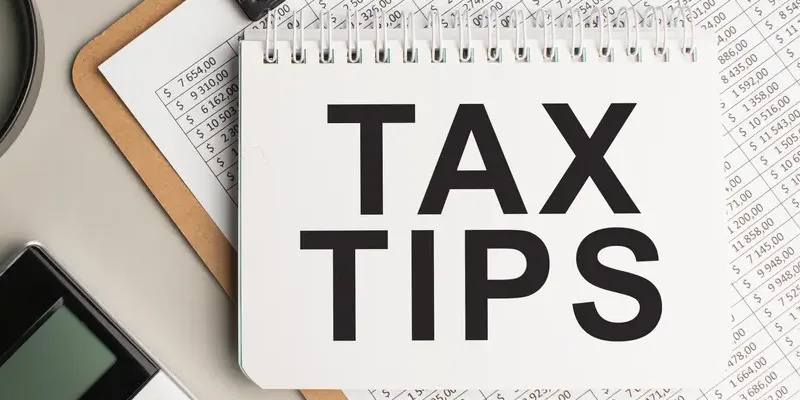Understanding the Breakdown of Who Pays the Most - and Least - in Taxes
Taxation, as inevitable as it may seem, often stirs up controversy and confusion. We've all heard debates about the fairness of tax systems, but what's the reality? Who exactly bears the brunt of taxes, and who gets away with paying the least? Let's break it down in plain language.
Who Pays the Most?
Here, we have the top three contributors to taxes from our society. We will dig into them one by one. So, lets get started.
High-Income Earners
High-income earners, comprising the upper echelon of earners, play a pivotal role in sustaining government revenue through taxation. These individuals, often representing the top 10% of income earners within a society, bear a significant portion of the overall tax burden. The rationale behind this lies in the progressive nature of taxation systems prevalent in many countries.
Progressive taxation entails imposing higher tax rates on individuals with higher incomes. This means that as one's income increases, the percentage of that income paid in taxes also rises. For high-income earners, this translates into a substantial portion of their earnings being allocated to taxes. Unlike individuals in lower income brackets who may fall under lower tax brackets, those with higher incomes face progressively higher tax rates on each additional dollar earned.
Corporate Giants
Corporate giants wield significant influence in the realm of taxation, often finding themselves at the center of public scrutiny and policy debates. Despite controversies surrounding tax avoidance tactics and the utilization of offshore tax havens, large corporations remain substantial contributors to government revenue. This contribution stems from various forms of taxation imposed on corporate entities.
One of the primary avenues through which corporations contribute to tax revenue is through corporate income taxes. These taxes are levied on the profits generated by corporations, with rates varying across jurisdictions. Despite concerns about effective tax rates due to deductions, credits, and loopholes, corporate income taxes constitute a significant source of government revenue in many countries.
Middle-Class People
The middle class, often referred to as the backbone of the economy, plays a crucial role in sustaining government revenue through taxation. While not as affluent as high-income earners, the middle class shoulders a significant tax burden, with various taxes eating into their hard-earned income.
Income taxes represent a substantial portion of the tax burden for the middle class. As individuals in this income bracket earn wages or salaries from employment, they are subject to federal and state income taxes. The progressive nature of income taxes means that as their income increases, so does the percentage of their earnings allocated to taxes. While various deductions, exemptions, and credits may reduce their taxable income, the middle class still faces a considerable tax liability.
Who Pays the Least?

Now that we have discussed who the major contributors are, lets delve into the details of those people who pay the least.
Low-Income Earners
When high-income earners and the middle-class shoulder significant tax burdens, it's important to recognize that certain segments of society receive more favorable tax treatment, particularly low-income earners or those living below the poverty line. These individuals face financial challenges and rely on various forms of government assistance to make ends meet.
The tax code provides relief to low-income individuals through refundable tax credits and other provisions aimed at reducing their tax liabilities or providing direct financial assistance. One such credit is the EITC, which provides a refundable tax credit to low-to-moderate-income working individuals and families. The EITC not only lowers the sum of tax due but can also lead to a refund, providing much-needed income support for struggling households.
Multinational Corporations
Next, we have the Multinational corporations. These corporations, due to their global operations and extensive resources, possess the means and incentive to engage in complex tax planning strategies aimed at minimizing their tax liabilities. These corporations often exploit differences in tax laws and regulations across jurisdictions to their advantage, resulting in what is commonly referred to as tax avoidance.
One common tactic employed by multinational corporations is profit shifting, whereby profits are artificially shifted from high-tax jurisdictions to low-tax or no-tax jurisdictions. This is often achieved through intra-company transactions, such as the transfer of intellectual property rights, loans, or services at artificially low prices. By doing so, corporations can allocate profits to subsidiaries in low-tax jurisdictions, effectively reducing their overall tax burden.
People Earning from Investments

Certain types of investment income, such as capital gains and dividends, enjoy preferential tax treatment under many tax systems. This preferential treatment means that individuals who derive a significant portion of their income from investments may end up paying a lower effective tax rate compared to wage earners.
Capital gains refer to the profits realized from the sale of assets such as stocks, bonds, or real estate. When an individual sells an asset for more than its purchase price, the difference, or capital gain, is subject to taxation. However, the tax rates applied to capital gains are often lower than those imposed on ordinary income, such as wages or salaries. In many territories, long-term money gains resulting from the sale of holdings owned for greater than a year are subject to lesser tax rates as compared to short-term money gains, which are taxed at ordinary income tax rates.
Conclusion
The breakdown of who pays the most - and least - in taxes reveals a complex interplay of socioeconomic factors and policy choices. While high-income earners and corporations bear a significant tax burden, loopholes, and preferential treatment often result in certain groups paying less than their fair share. As discussions about tax reform persist, understanding these dynamics is crucial for crafting equitable and effective tax policies that benefit society as a whole.












